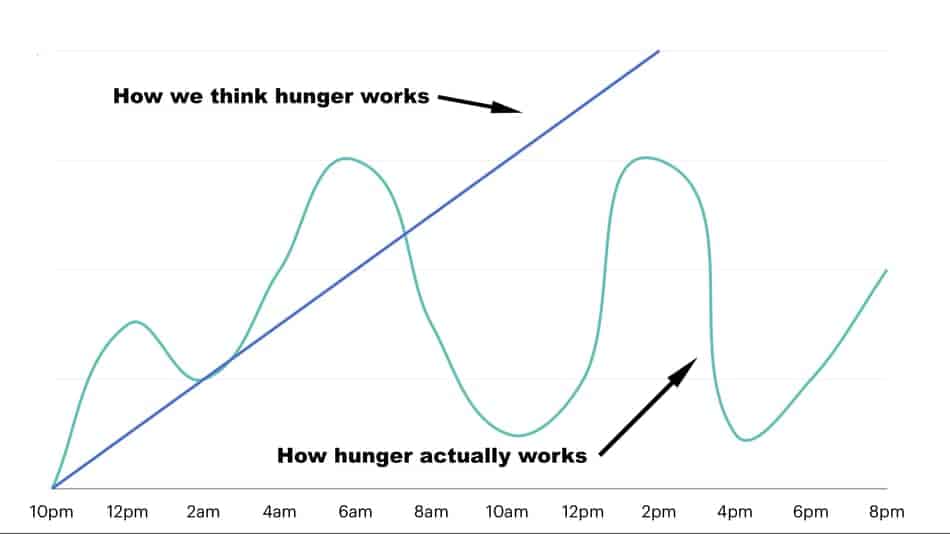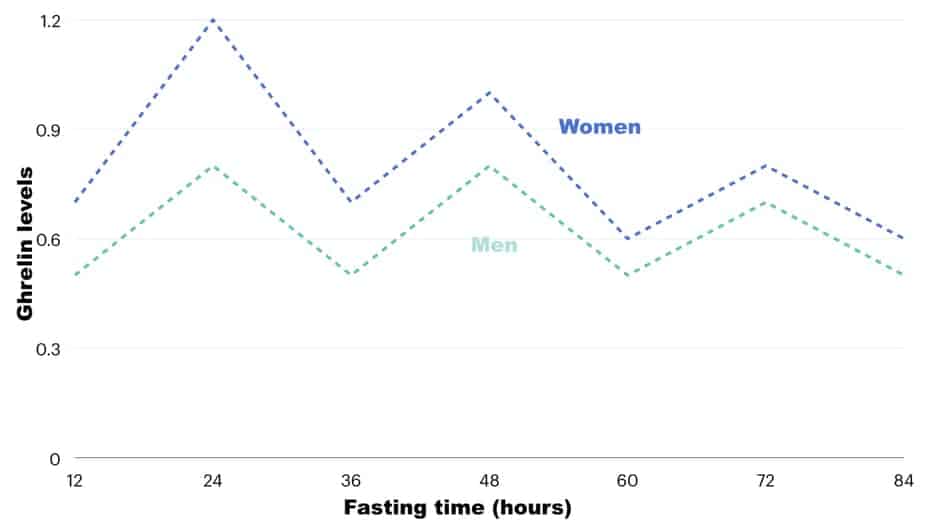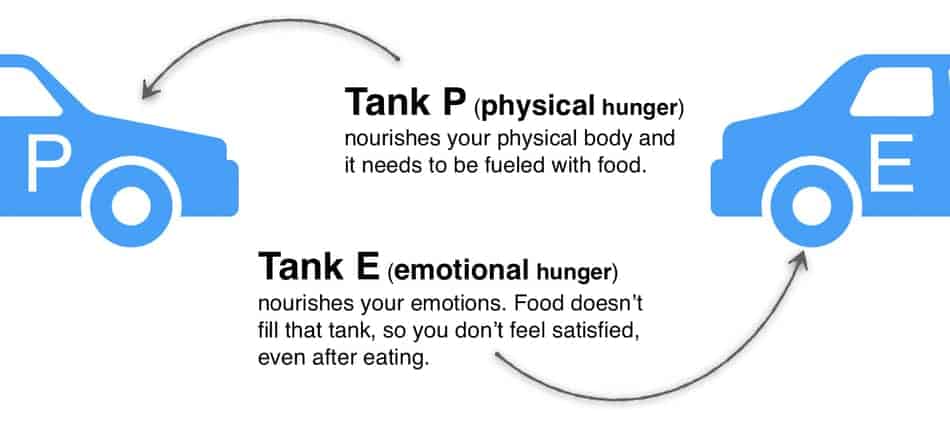
Doing one meal a day is a great opportunity to learn more about your body signals and be able to sense exactly how physical hunger really feels.
You may not get hungry on OMAD because hunger signals are directly related to the levels of ghrelin in the body. Ghrelin is the hormone that sends hunger signals to your body, and it changes throughout the day.
Many people think that hunger is going to get worse with more time after the last meal. However, the reality is that it goes up and down throughout the day.
Why I’m Not Feeling Hungry On OMAD?
Most of the time people ask me how to reduce their hunger while doing OMAD. Not so often I’ve been asking the opposite questions which are why I’m not feeling hungry.
Not feeling hungry on OMAD can be due to getting used to intermittent fasting, low ghrelin levels, or good self-awareness of the body. People who do get more hungry than usual may not be able to differentiate physical hunger from appetite or cravings.
There can be number of things that explaines why you’re not feeling hungry.
Listen.
How do you measure hunger?
Feeling hungry can be very subjective.
Sometimes people may even exaggerate saying “I’m starving” after they missed the breakfast. They may feel like the whole world will fall apart or they will lose their “gains” after they skip a meal.
This means for one person not having a meal may feel like the end of the world. Where for others, not eating for 24-hours is a bare “meh, I can do it” kind of a thing.
Another aspect is being able to separate physical hunger from emotional hunger. That is a bigger problem.
When I first started one meal a day I was panicking because I didn’t know how exactly the physical hunger feels.
I was growing up in a family where we always eat food, more than necessary. Not because of hunger.
But because that’s how my parents (and grandparents) dealt with their emotions. So I never had an emotional education. Nobody taught me that feeling bad is just as normal as feeling good.
So everyone from my family was using the food to escape from bad emotions.
Including me.
And when you’re growing up in this type of environment you quickly acquire those habits. So my whole adolescents I was struggling with weight.
And it took years to finally realize what is the problem. I was using food to feel better. I was eating, even without feeling hungry.
What is Hunger?
Doing OMAD is a great opportunity to really sense and feel how does physical hunger feel. And once I’ve managed to understand that physical hunger and emotional hunger are two separate things, I started to control my hunger.
Hunger is a message from your body that is time to eat. The message is sent via the gastrointestinal peptide hormone ghrelin. Levels of ghrelin change throughout the day. This means hunger signals don’t just raise more and more. It fluctuates.

Also, men and women will have a different levels of ghrelin throughout the day.
For men, it gets a bit easier because they have lower response of ghrelin, therefore they will feel less hungry.
For women, hunger may feel a little bit more intense, just because women have higher levels of ghrelin.

So if you’re noticing that you’re not feeling hungry on OMAD there is nothing to worry about. It is actually normal.
This means your body doesn’t react as some type of an emergency while you’re fasting.
Which is a good sign.
On the other hand, many people freak out when they feel just a slight feeling of hunger (just like I did). This is because they may not know what does the actual hunger feels like.
People who use food as an emotional blanket often cannot distinguish between emotional discomfort and physical hunger.
If someone is eating whenever they feel frustrated, sad, depressed, anxious, lonely, or even excited to feel “normal” again, they will have a hard time with fasting. Because they been using food to mask all the discomfort.
So when you take away the food, now you just took away the “coping mechanism” of how to handle the emotions.
It’s like opening up the scalp and exposing all the flesh.
That’s why people panic, freak out, and lose control. They are not used to experiencing negative emotions for too long.
It’s like your drive a car with two tanks. Tank P and Tank E.

Tank P is physical hunger. It can be only fueled by food. When you’re physically hungry, your body is sending you a signal through the “dashboard” it’s time to eat.
Tank E is emotional hunger. Hunger signals coming from the Tank E dashboard show that you have some psychological needs that haven’t been effectively met.
People are used to fill out Tank E with food.
Big mistake.
Because it will take a lot of food to silence emotional hunger. This means no amount of food will be able to mute that signal. So they will “feel” like they need to eat again soon, regardless of how much they eat.
Can OMAD Cause Loss Of Appetite?
After doing OMAD for several weeks I’ve noticed some positive changes in my perception of food and fullness. That made me think is it possible that one meal a day can reduce my appetite? After doing some research, here is what I’ve found out.
OMAD can cause the loss of appetite. One meal a day, or any other form of calorie restriction, will reduce the amount of food you eat. Therefore it will make you fuller with less food and reduce your appetite.
This means after few days you will automatically get fuller with less food. And you won’t think about the food as before. So the changes in weight loss are primarily by decreasing appetite (source).
This is good news. Because it shows that it just gets easier as you follow along.
Conclusion
Not feeling hungry on one meal a day isn’t anything to worry about. In fact, it is better because it means you can handle this process that is so uncomfortable for others.
